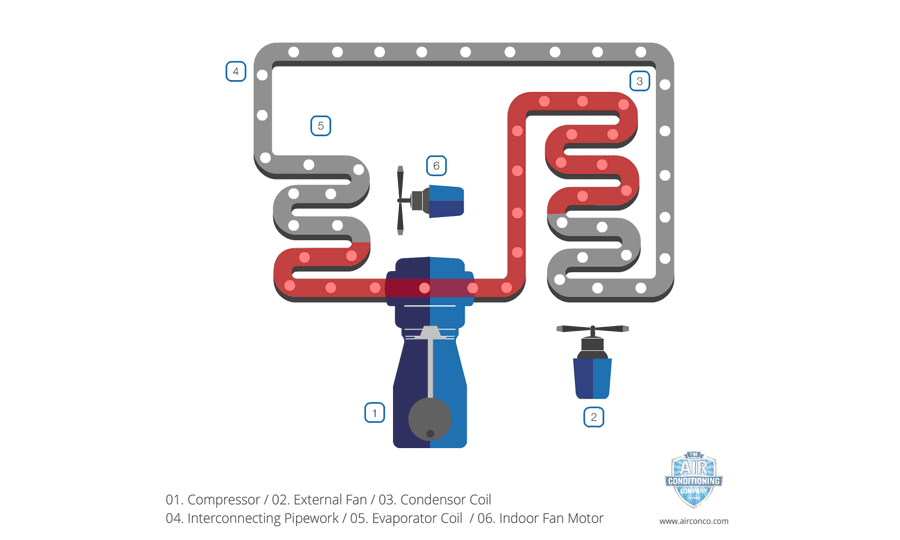The cold side consists of an expansion valve and a cold coil, and it is usually part of your furnace or some type of air handler. The furnace blows air through an evaporator coil, which cools the air. Then this cool air is routed throughout your home by means of a series of air ducts. A window unit operates on the same principal, the only difference being that both the hot side and the cold side are located within the same housing unit.
The compressor (which is controlled by the thermostat) is the ‘heart’ of the system. The compressor acts as the pump, causing the refrigerant to flow through the system. Its job is to draw in a low-pressure, low-temperature, refrigerant in a gaseous state and by compressing this gas, raise the pressure and temperature of the refrigerant. This high-pressure, high-temperature gas then flows to the condenser coil.
The condenser coil is a series of piping with a fan that draws outside air across the coil. As the refrigerant passes through the condenser coil and the cooler outside air passes across the coil, the air absorbs heat from the refrigerant which causes the refrigerant to condense from a gas to a liquid state. The high-pressure, high-temperature liquid then reaches the expansion valve.
The evaporator coil is a series of piping connected to a furnace or air handler that blows indoor air across it, causing the coil to absorb heat from the air. The cooled air is then delivered to the house through ducting. The refrigerant then flows back to the compressor where the cycle starts over again.

